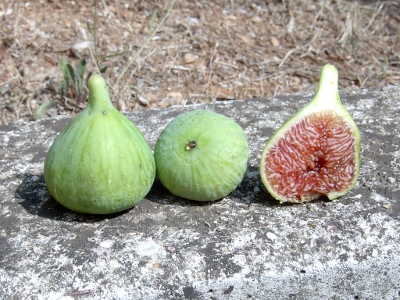︎︎︎ FICO VERDONE

La pianta madre è stata ritrovata nel comune di Città di Castello (PG), ma questa varietà era diffusa un po’ in tutto il centro Italia. Ancora coltivato e conosciuto, sempre però in piante singole. L’albero è di statura e vigoria media, con chioma aperta. Molto rustico, viene riprodotto tradizionalmente da pollone. Il frutto Fa una sola fioritura. I forniti hanno un bel colore verde intenso, tendente allo scuro, di pezzatura media, con forma globosa. La polpa è rossastra, piena, non troppo succosa, con acheni mediamente grossi. I forniti maturano tra la fine di agosto e l’inizio di settembre. Sono molto adatti sia al consumo fresco che all’essiccazione, che un tempo veniva fatta stendendo i fichi tagliati a metà al sole sui graticci, e quando non c’era più il sole, perché magari eravamo già alle porte dell’autunno, si essiccavano al forno con calore moderato.
The mother plant was recovered in the area of Citta’ di Castello (Perugia), but this variety was widespread in most of Central Italy, especially between Umbria and Tuscany. It is still cultivated and known, though only in individual specimens. The tree is of medium vigor and size and has a spreading crown. It is very hardy and is traditionally propagated through shoots. The fruit It only has one harvest. The main crop’s figs are an intense green tending to dark; they are medium in size and globe-shaped. Their flesh is reddish, full, not too juicy and with moderately large achenes. The main crop ripens between the end of August and the beginning of September. They are very suitable for fresh eating and for drying. Once, the drying used to be done by placing the figs cut in half on cane mats and when the sun set early because autumn was approaching, they would be dried in the oven with low heat.